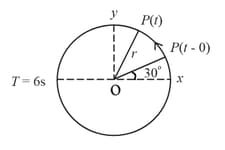Definitions of Energy - Energy is a quantitative property of a system that depends on the motion and interactions of matter and radiation within that system. That there is a single quantity called energy is due to the fact that a system’s total energy is conserved, even as,within the system, energy is continually transferred from one object to another and between its various possible forms.
Definitions of Energy - Energy is a quantitative property of a system that depends on the motion and interactions of matter and radiation within that system. That there is a single quantity called energy is due to the fact that a system’s total energy is conserved, even as,within the system, energy is continually transferred from one object to another and between its various possible forms.: Overview
This topic covers various concepts like Equation of Velocity in Terms of Time, Phase Difference in SHM, etc.
Important Questions on Definitions of Energy - Energy is a quantitative property of a system that depends on the motion and interactions of matter and radiation within that system. That there is a single quantity called energy is due to the fact that a system’s total energy is conserved, even as,within the system, energy is continually transferred from one object to another and between its various possible forms.
A spring of force constant is cut into three parts of lengths in ratio . The smallest spring is further cut into two parts of equal length. The force constant of the shortest spring formed will be
At a particle is at and moving towards mean position. Find the equation of SHM. Also find the speed at
A particle performs S.H.M. with amplitude . The speed of particle is doubled at the instant when it is at distance from mean position. The new amplitude of the motion is
A body attached to a spring oscillates in horizontal plane with frequency. Its total energy is If the velocity in he mean position is, then the spring constant is
For particle revolving round the centre with radius of circular path and regular velocity , as shown in below figure, the projection of on the -axis at time is

If initially a particle is at and its position is given by ) then find if the particle is moving away from the mean position?
If velocity of body is half the maximum velocity. Then what is the distance from the mean position?
A particle executes simple harmonic motion about along x-axis. The position of the particle at an instant is given by . Find the average velocity and average acceleration for a time interval to .
Two particles P and Q of equal masses are suspended from two massless springs of force constants and respectively. If maximum velocities during oscillation are equal then the ratio of amplitudes of P and Q is
The displacement of a particle executing simple harmonic motion is given by.Then the amplitude of its oscillation is given by
The equation of motion is represented by . The time period of periodic motion is
Two simple harmonic motions are represented by equations and What is the phase difference between their velocities?
If the maximum velocity of a particle performing S.H.M. is , then the average velocity during its motion from one extreme position to the other will be
A body of mass is suspended from massless spring of natural length . If mass is released from rest, spring can stretch up to a maximum vertical distance of , the potential energy stored in the spring at this extension is ()
A block of mass attached to a spring of spring constant is pulled horizontally from to . Find the work done by spring force.
The work done by the tension in the string of a simple pendulum in one complete oscillation is equal to
Displacement of a particle is given by . Is it simple harmonic? If so, what is its period?
Two linear simple harmonic motions with same amplitude and frequency and get superimposed on a particle in and direction. If the phase difference between the two are initially, the resultant path will be:
Equation of Displacement in SHM
The displacement of a pendulum for is correctly represented by
Velocity of a particle moving along a straight line at any time is given by . Find out the distance travelled by the particle in the first two seconds.
